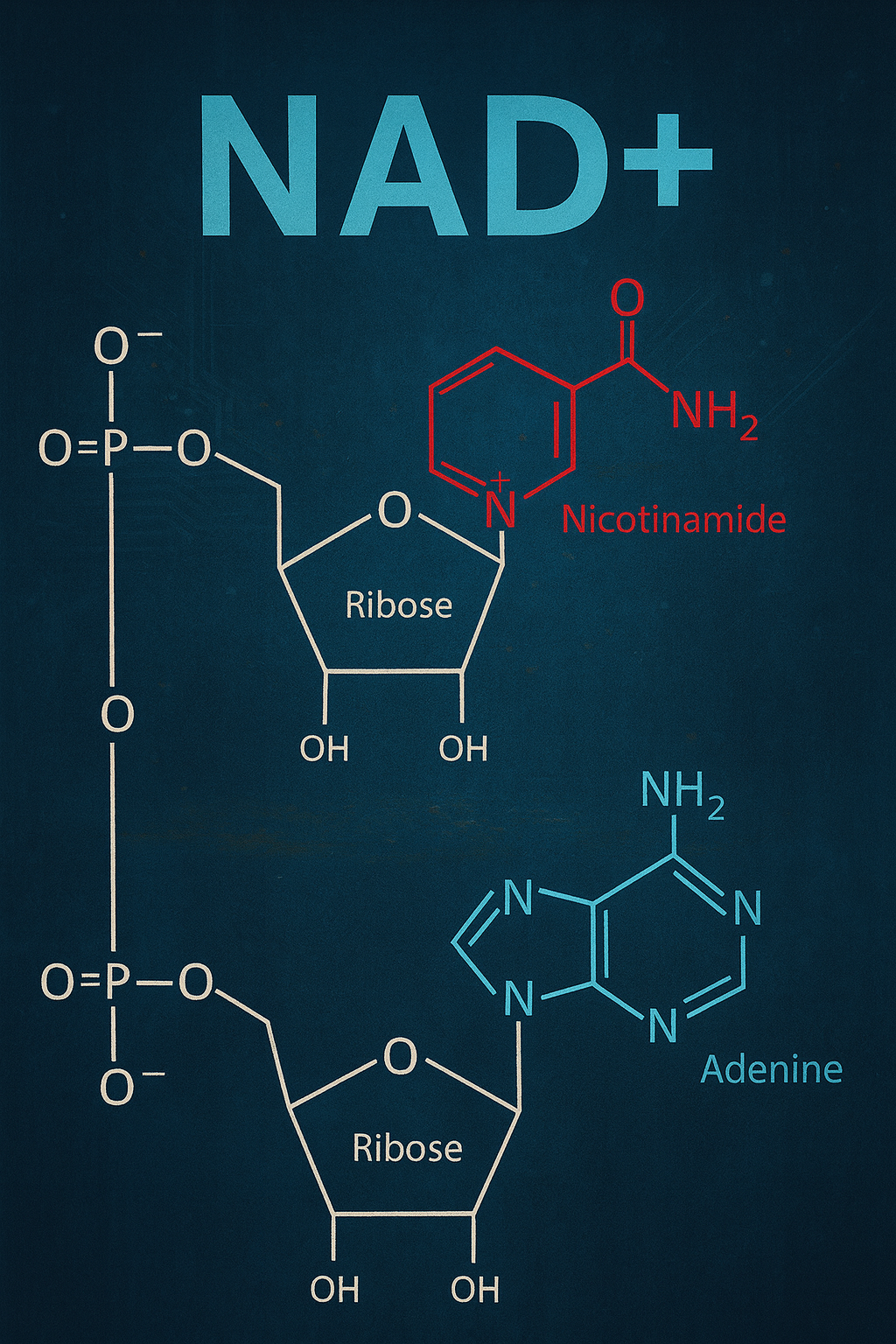
nad+
THE "VITALITY" PEPTIDE
NAD+ is a critical coenzyme found in every living cell. Without it, the essential processes that fuel energy, repair DNA, regulate genes, and sustain youthful cell function simply can’t happen.
WHAT IS "NAD+"?
Definition: Nicotinamide Adenine Dinucleotide (NAD+) is a naturally occurring coenzyme present in every living cell, essential for cellular energy production, DNA repair, and the regulation of critical biological processes.
Classification: Pyridine Nucleotide Coenzyme
Molecular Formula:C21H27N7O14P2
NAD+- FOR VITALITY
Also known as nicotinamide adenine dinucleotide, NAD+ is the oxidized form of NADH — two sides of the same essential molecular coin. In every living cell, NAD+ and NADH cycle back and forth, shuttling high-energy electrons between reactions in what’s known as redox chemistry. This continuous exchange powers the electron transport chain inside the mitochondria, driving the production of ATP — the universal energy currency that fuels every biological process, from muscle contractions to brain signaling.
But NAD+ isn’t just about energy. It serves as a cofactor in over 500 enzymatic reactions, influencing everything from DNA repair and gene expression to calcium signaling and stress responses. By maintaining a healthy NAD+/NADH ratio, cells preserve homeostasis — their internal balance — ensuring that metabolism, repair, and communication between pathways run smoothly. Without adequate NAD+, these systems falter, leading to reduced energy efficiency, slower repair, and accelerated cellular aging.
CLINICAL BENEFITS
Powerfully drives mitochondrial function and ATP synthesis, keeping energy levels high and metabolism efficient.
Activates sirtuins and PARPs to support genomic stability, help with cellular clean-up, and modulate aging-related pathways.
Supports neuronal energy needs and protection, potentially aiding memory and cognitive performance.
As NAD+ declines with age, supplementation may help restore mitochondrial function, revitalize metabolism, and support healthy aging.
Serves as a requisite redox cofactor in oxidative phosphorylation, facilitating electron transfer through Complex I and enabling maximal ATP yield.
Acts as a substrate for poly(ADP-ribose) polymerases (PARPs), enabling rapid detection and repair of single- and double-strand DNA breaks to preserve genomic integrity.
Modulates SIRT1–SIRT7 activity to influence epigenetic regulation, mitochondrial biogenesis, and proteostasis, thereby attenuating cellular senescence.
Maintains neuronal redox homeostasis, supports axonal transport, and reduces neuroinflammatory signaling, thereby preserving synaptic plasticity and cognitive function.
Enhances AMPK–SIRT1 axis signaling to improve lipid oxidation, glucose utilization, and metabolic flexibility under varying energetic demands.

FOLLOW US
COMPANY
CLIENT SUPPORT
LEGAL
Copyright 2025. Vitality Labz. All Rights Reserved.
Copyrights 2025 |VITALITY LABZ | Terms & Conditions
